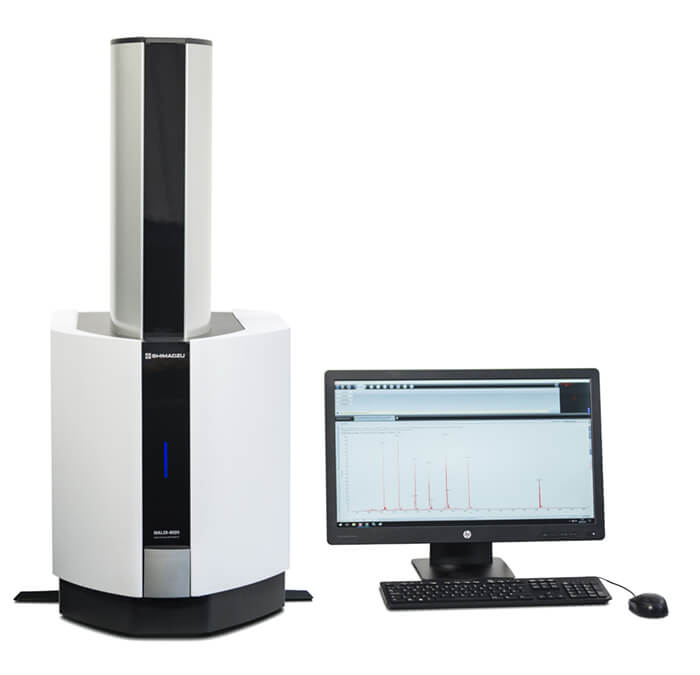Matrix-assisted laser desorption/ionization time-of-flight mass spectrometers (MALDI-TOF MS) feature simple and rapid detection of low molecular to high molecular weight compounds in a wide range of samples. MALDI-TOF MS is widely used to determine molecular weights of synthesized products and natural substances in R&D laboratories and quality control sectors. In addition, utilizing the feature of MALDI-TOF MS which can detect multiple components in a wide mass range as singly-charged ions (1 component = 1 peak), an attempt is being made to use the instrument for profiling property changes of food and biological specimens. This article introduces an example of simple and rapid detection of heating-induced degradation products in cooking oils, using a benchtop MALDI-TOF MS.
The MALDI-8020 is a compact-design, small footprint linear mode-only MALDI-TOF mass spectrometer. Its performance in linear mode (positive ion) is comparable to the same mode of a larger conventional MALDI-TOF mass spectrometer. Equipped with a 200 Hz solid-state laser and a load-lock chamber mechanism that enables a target plate change while maintaining the degree of vacuum at the measuring position, the instrument ensures rapid measurements. K. Shima

Materials and Methods
A commercially available olive oil was heated at 180 °C for eight hours to prepare model samples of cooking oil degraded by heating. Each heated or unheated olive oil sample (1 mg/mL, 90 % hexane / 10 % diethyl ether solution) was mixed with an equal volume of matrix solution and cationization agent, spotted onto a reusable MALDI target slide (FlexiMass-SR) and dried.
The matrix was prepared by dissolving 2,5-dihydroxybenzoic acid (DHB, 10 mg/mL) in methanol, and the cationization agent was prepared by dissolving sodium iodide (1 mg/mL) in tetrahydrofuran. Samples were analysed using the MALDI- 8020 benchtop MALDI-TOF mass spectrometer (Fig. 1).
To increase the number of detected degradation products of cooking oils, heated oil samples were fractionated using silica gel 60 (particle size: 42 to 105 μm) generally used for column chromatography. Non-polar fractions were eluted with 90 % hexane / 10 % diethyl ether solution, and polar fractions were eluted with 100 % diethyl ether solution, both of which were measured by using the MALDI-TOF MS.
 Fig. 1 MALDI-8020 Benchtop MALDI-TOF MS
Fig. 1 MALDI-8020 Benchtop MALDI-TOF MS




